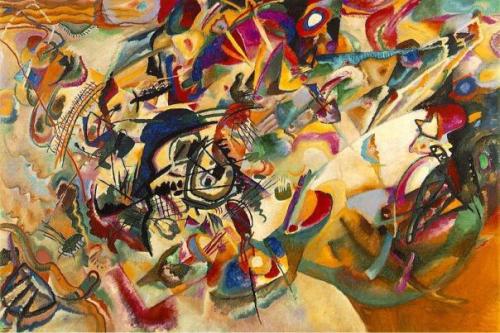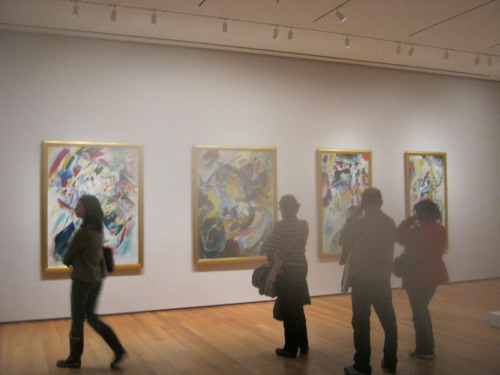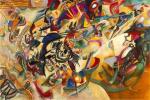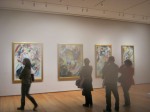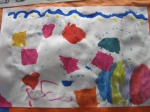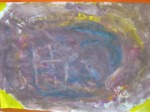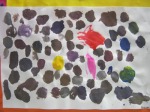I recently went into my son’s second grade class with some digital pictures by Wassily Kandinsky, a famous Modern painter born in Russia in 1866. He is known for creating some of the first completely abstract Modern art – art that is not a picture of any thing, but conveys its message purely through color and form.
We then had the kids paint their own abstract paintings, using tempera paint. I had the kids mix colors, but that was the only suggestion. Each piece was unique. This is a neat bunch of kids, very thoughtful and creative.
We listened to music while we painted, classical music from the time Kandinky lived – including a March by Piatigorski, and The Swan from Saint Saens’ Parade of the Animals. We ended with a violin partita by Bach. I’m not sure how much the music affected the children, since the music player was not very powerful and the kids were excited to paint.
Kandinsky painted several giant Compositions (named as if they are music). We went around and said what we liked or noticed in Composition VII, painted in 1913, which is 6 1/2 feet tall and 10 feet wide. The actual painting is in Moscow. It is an incredible picture, and I told the kids how I’d read it is about the Last Judgement, the Resurrection, the Flood, the Garden of Love, basically the end of the world. They loved it.
The children saw ladders, bridges, flowers, suns, hearts and butterflies – the energy, and imagery of war and destruction but also delicate beauty.
Kandinsky saw art as spiritual – that the artist is the prophet of a new age. He “saw” music, which is called synesthesia.
In 1903 Kandinsky painted a small, energetic, expressive, and mysterious picture of a person on a horse, called the Blue Rider, which was taken for the name of a group of painters in the 1900s.
He eventually developed a much more serene way of painting, with geometric shapes – circles, and lines.
- Wasilly Kandinsky’s painting Composition VII, 1913
- We saw these paintings by Kandkinsky at MoMA on a visit in February. They were painted in 1914.
- Some kids paint until they have destroyed the paper
- She loved mixing all these interesting colors
